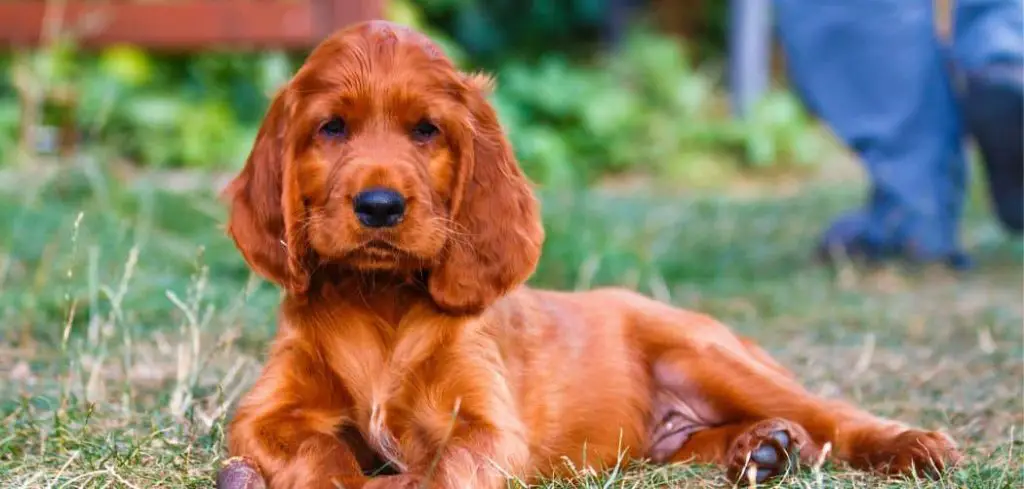If your dog is panting, drooling, and not eating, it’s more than just a warm day or picky appetite. This specific combination of symptoms often signals that your dog is in distress.
Understanding what these signs mean together is key to responding appropriately and getting your dog the care they need.
We outline what can cause your dog to pant and drool while refusing food, what you can do at home, and when it’s time to call the vet.
Dog Panting Drooling Not Eating: Why It Happens
When your dog is panting, drooling, and not eating, this is often associated with overheating, pain, anxiety, toxin ingestion, or gastrointestinal distress. When a dog is panting, drooling, and not eating, their body is often trying to regulate something—be it heat, nausea, or internal discomfort.
These symptoms may also point to more urgent conditions like bloat or poisoning, so it’s important to act fast if they appear suddenly.

Dog Panting Drooling Not Eating: Common Causes
Overheating or Heatstroke
One of the most urgent causes of panting and drooling in dogs is overheating. Dogs don’t sweat like humans; they regulate their body temperature by panting.
When they get too hot, their panting becomes excessive, drooling increases, and they may lose interest in food.
Heatstroke can develop quickly in hot weather, especially for flat-faced breeds (like Bulldogs), large dogs, or overweight pets.
If your dog is lethargic, weak, or has bright red gums along with these symptoms, it’s a medical emergency.
Move them to a cool space and call your vet immediately.
Related: Dog drooling and not eating (Causes and when to worry)
Nausea or Gastrointestinal Distress
Dogs that feel nauseated will often drool, pant, and turn away from food.
This could be due to eating something they shouldn’t have—spoiled food, trash, or rich treats—or an underlying issue like gastritis or pancreatitis.
Some dogs may also try to vomit or have diarrhea in addition to refusing food.
The panting in this case is often a reaction to discomfort, and the drooling is triggered by nausea.
Monitor your dog closely and withhold food temporarily to see if the symptoms resolve or escalate.
Pain or Internal Discomfort
Pain is a common cause of panting and drooling in dogs. If your dog has an injury, dental issue, or abdominal pain, they may pant heavily, salivate, and lose their appetite.
This is particularly common in conditions like pancreatitis, dental abscesses, or bloating.
Dogs in pain may also appear restless, tremble, or avoid touch.
Don’t ignore these signs—pain rarely improves without treatment, and some causes, like bloat, can become life-threatening in a matter of hours.
Anxiety or Panic
Dogs who are anxious or panicking can show physical symptoms like heavy panting, drooling, pacing, and refusal to eat.
Common triggers include fireworks, thunderstorms, loud noises, travel, or separation anxiety.
If the behavior is clearly tied to an emotional trigger and improves once the environment calms, you may not need to visit the vet.
However, chronic anxiety can take a toll on your dog’s health. In that case, behavioral training or vet-approved calming aids may be beneficial.
Toxin Exposure
Ingesting a toxic substance can lead to panting, drooling, vomiting, and a refusal to eat. Common toxins include chocolate, grapes, xylitol (found in sugar-free gum), medications, or household cleaners.
Depending on the toxin, additional symptoms like tremors, diarrhea, or seizures may develop.
If your dog is showing these signs and you suspect poisoning, don’t wait. Time is critical. Call your vet or a pet poison hotline and try to identify what they may have ingested.
What to Do if Your Dog Is Panting, Drooling, and Not Eating
If your dog is showing these symptoms together, take the following steps:
Move them to a cool, quiet area—especially if it’s hot or humid.
Offer fresh water, but don’t force them to drink.
Check for signs of pain or visible injuries—gums, mouth, abdomen.
Withhold food for several hours while monitoring their energy level.
Avoid physical exertion, especially in warm weather or for senior dogs.
Improvement within 6–12 hours may mean the cause was mild, but ongoing symptoms mean it’s time to call your vet.
When to Call or Visit Your Vet
You should contact your vet right away if:
Your dog’s panting and drooling persist for more than a few hours.
They refuse food and water for a full day.
Vomiting, diarrhea, or signs of collapse are present.
You suspect they ate something toxic.
Your dog is showing signs of confusion, trembling, or difficulty walking.
Never assume symptoms will go away on their own—dogs often mask pain until it becomes severe.
Related: Dog drooling and shaking not eating (Causes and what to do)
Key Takeaway
Panting, drooling, and not eating are more than just quirks—they’re usually your dog’s way of telling you something’s wrong.
Whether the issue is heatstroke, pain, anxiety, or something even more serious, you play a critical role in noticing these symptoms early.
Don’t wait to act. The quicker you respond, the better chance your dog has to recover comfortably and safely.
